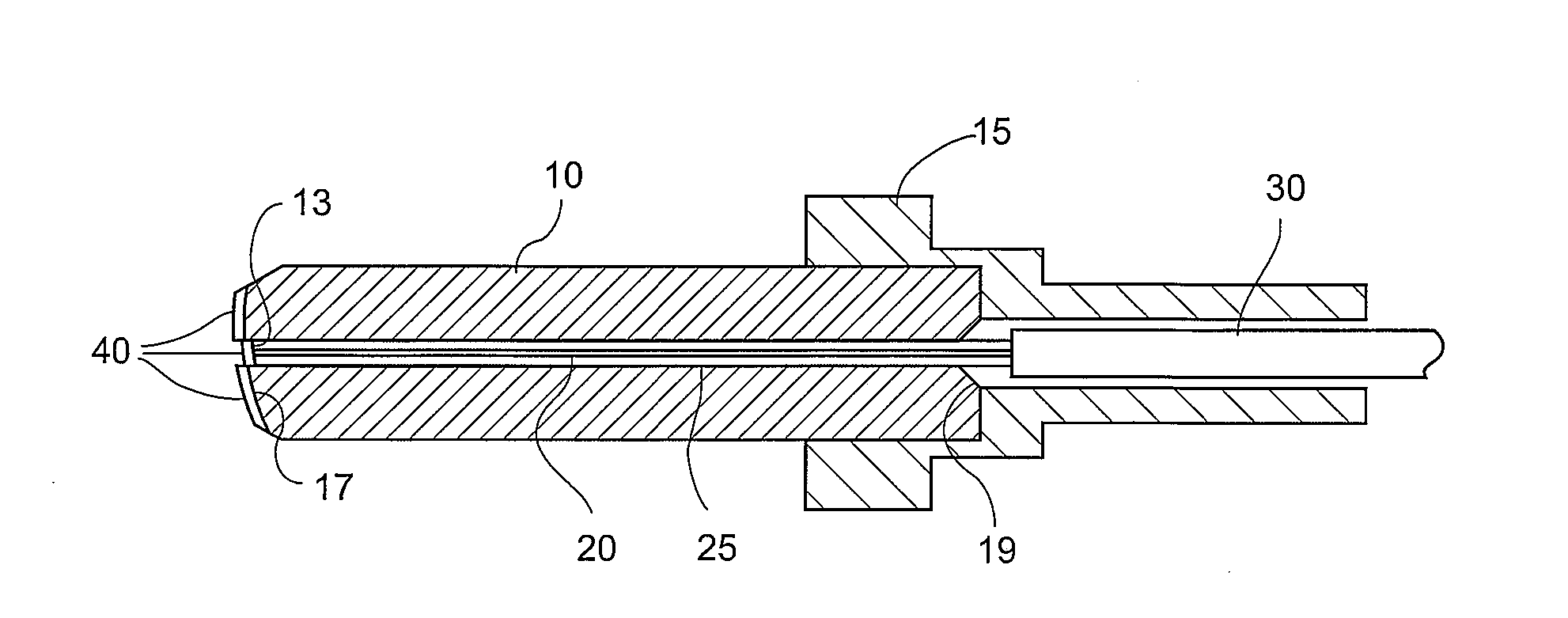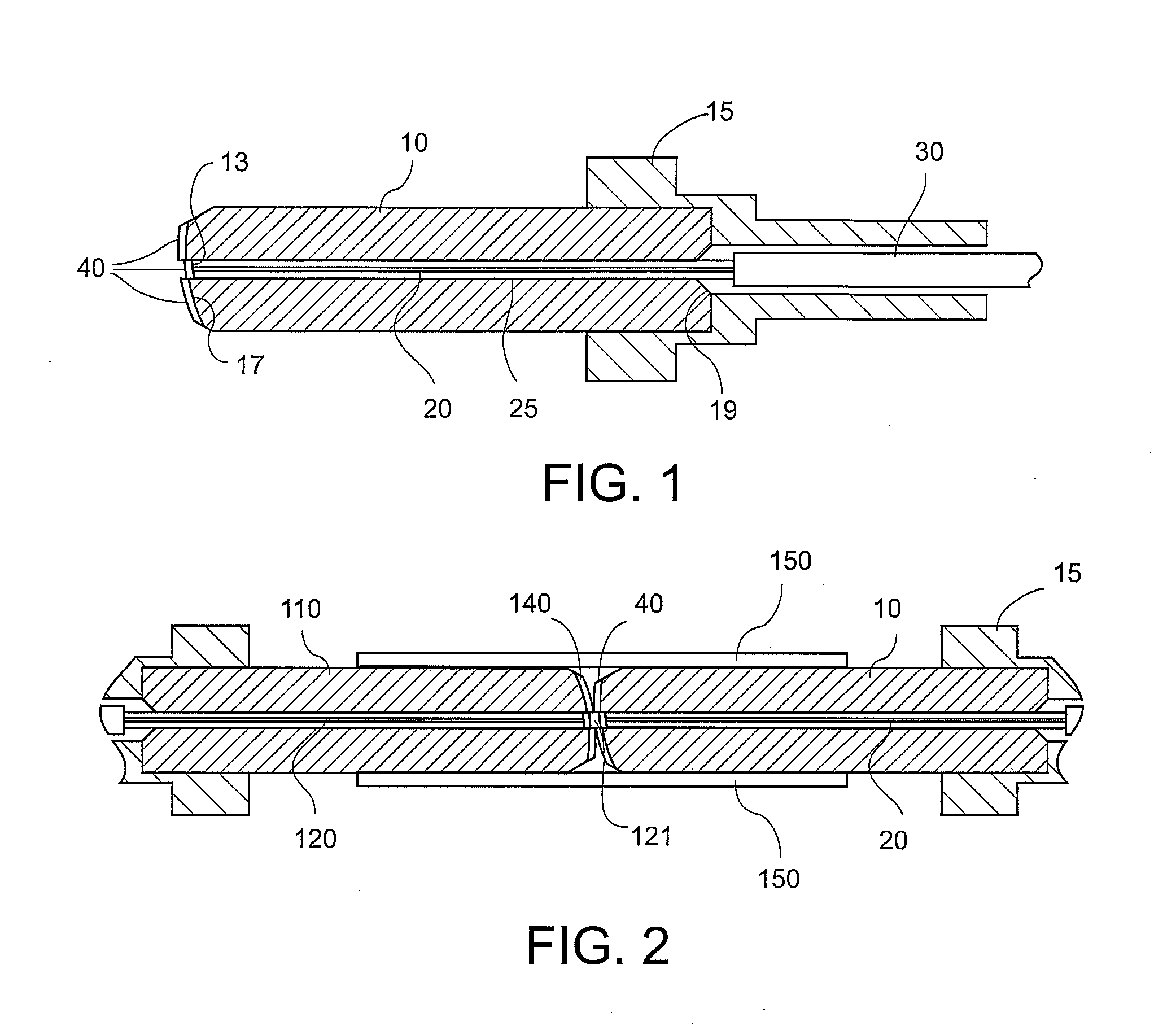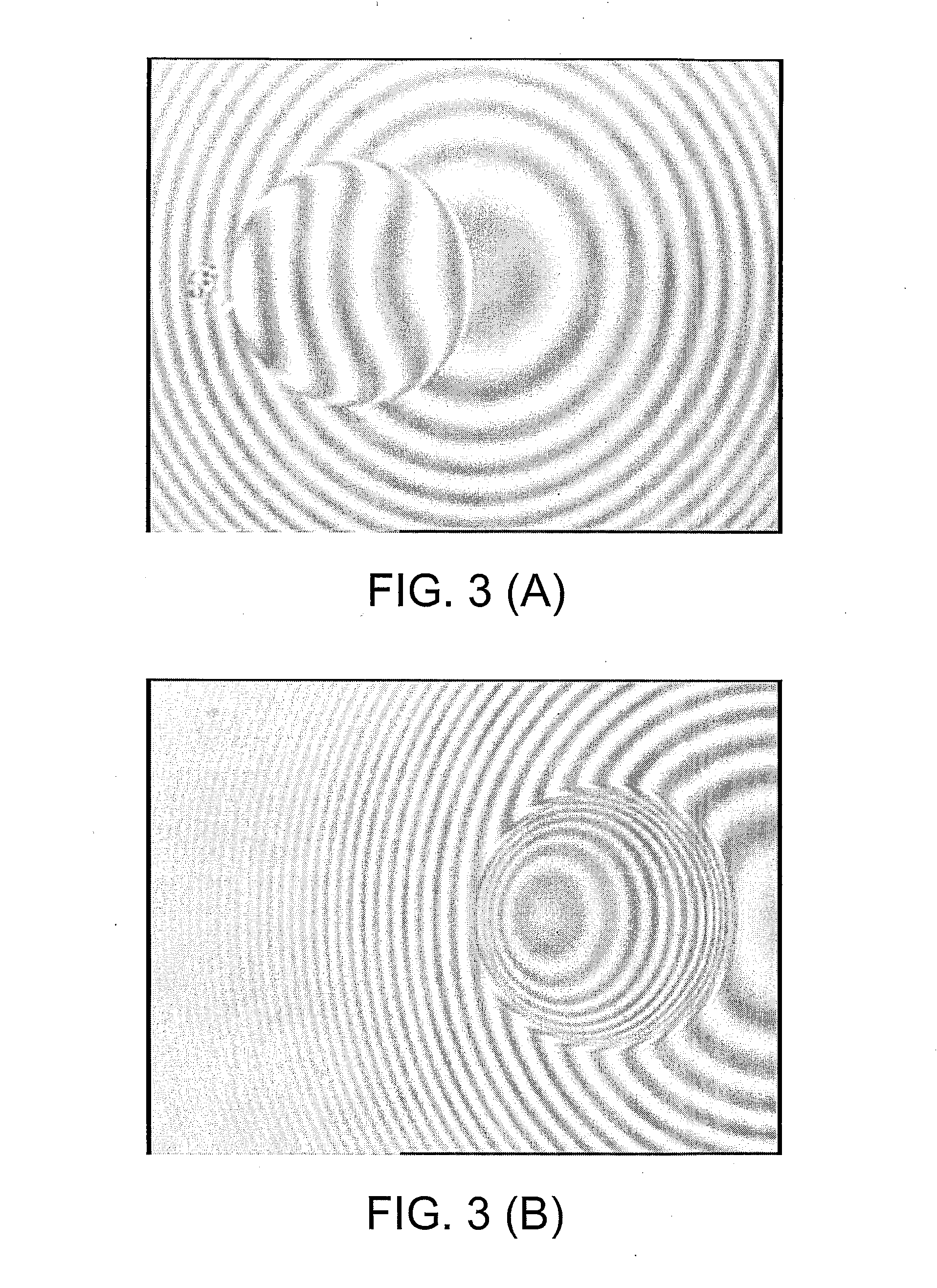Non-contact optical fiber connector component
a technology of non-contact optical fiber and connector, which is applied in the direction of optical elements, instruments, manufacturing tools, etc., can solve the problems of degrading optical performance, poor performance, and easy apparent weakness of this approach, so as to reduce the cost of ar coating, reduce the transmission loss at air-fiber, and easy coupling
- Summary
- Abstract
- Description
- Claims
- Application Information
AI Technical Summary
Benefits of technology
Problems solved by technology
Method used
Image
Examples
Embodiment Construction
[0023]With reference to FIG. 1, an embodiment of the non-contact optical fiber connector component according to the present invention is a non-contact fiber ferrule assembly for making non-contact optical fiber connectors. An optical fiber 20 is permanently affixed in the axial through hole 25 of a connector ferrule 10 with epoxy, and a metal flange 15 is connected to the ferrule 10. The front surface of the ferrule 17 forms a smooth polished, curved profile with the fiber surface 13 somewhat offset from surface 17. An AR coating 40 is applied over the entire polished surface of the ferrule 17 and the fiber facet 13. The fiber 20 can be any type of optical fiber. For example, it can be single mode fiber, multimode fiber, or polarization maintaining fiber.
[0024]FIG. 2 shows a pair of such non-contact fiber connector components coupled together to complete a fiber connection with the aid of an alignment split sleeve 150 found in a connector adapter. A conventional fiber connector adap...
PUM
| Property | Measurement | Unit |
|---|---|---|
| polish angle | aaaaa | aaaaa |
| polish angle | aaaaa | aaaaa |
| diameter | aaaaa | aaaaa |
Abstract
Description
Claims
Application Information
 Login to View More
Login to View More - R&D
- Intellectual Property
- Life Sciences
- Materials
- Tech Scout
- Unparalleled Data Quality
- Higher Quality Content
- 60% Fewer Hallucinations
Browse by: Latest US Patents, China's latest patents, Technical Efficacy Thesaurus, Application Domain, Technology Topic, Popular Technical Reports.
© 2025 PatSnap. All rights reserved.Legal|Privacy policy|Modern Slavery Act Transparency Statement|Sitemap|About US| Contact US: help@patsnap.com



